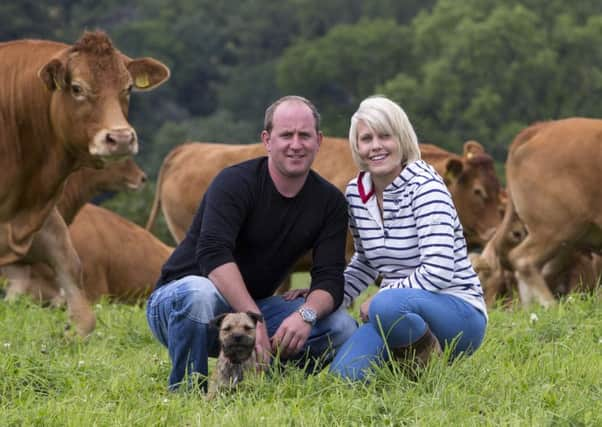Lights, camera, action needs to find new furrow
This article contains affiliate links. We may earn a small commission on items purchased through this article, but that does not affect our editorial judgement.


A similar query hangs in the air as the BBC plans to follow up on its success in This Farming Life with another series featuring four farming families.
Is this the latest example of a TV company having come up with a winning formula, then doing it to death or at least continuing with it until everyone is thoroughly deeved.
Advertisement
Hide AdAdvertisement
Hide AdBy general consensus, This Farming Life, aired earlier this year, showing 12 months on four disparate livestock farms in Scotland, worked because it was dealing with real people and dealing with real issues in their sometimes all too real world. The programmes showed the trials and tribulations of working with cattle and sheep and it also revealed the rewards that also come with the business.
That series followed the success of Lambing Live with its focus on the Dykes’ sheep farming enterprise and where it was accompanied by the wide-eyed wonder of its presenters as they were informed about life down on the farm.
Then there was The Mart, chronicling the dealings and goings on at Thainstone. The people who starred in this mini-series were extremely real and their work was well portrayed although it is understood it took a fair bit of jiggery pokery and some creative direction to get all the nuances and niceties of selling livestock to fit onto the small screen.
So far, farming has been a big winner in this obsession by TV on what goes on down in the farm. It has well and truly narrowed the knowledge gap that had grown in previous decades between how food is produced and those who consume it. But the question now is how to continue the success and prevent staleness entering the equation. Just as getting minor celebrities to consume kangaroo genitalia or possums’ bottoms in some jungle hideaway has become extremely tedious, is there not a danger that seeing too many lambs being born – front ways, back ways and even, sadly, in bits – will only produce yawns?
So far most of the TV farm programmes have featured sheep. Of all the farmed species, sheep seem to be most suited to the public’s view of farming. Is it not about time the cameras swung round to other livestock such as pigs and poultry? Both pig and broiler production are highly specialised and are invariably labeled “industrial”. This conveniently ignores the fact that the end product is much less expensive and the growing system is much more welfare friendly than it ever used to be.
But will a modern pig or poultry farm feature on television? This is unlikely as what we are dealing with is the TV companies’ perception of farming and not reality. Another way to reduce any accusation of sameness in future farming programmes would be to deal with more of the issues of the moment.
The advert for participants for the next series asks “Are you a farmer working in a beautiful or remote part of Scotland?” If this means the north and west of the country, why not choose a farm bedevilled with sea eagles or geese, or warring with their landlord, or suffering badly from black loss? There are a lot of real-life issues that would spice up the next round of programmes.
If the emphasis in the advert is on “living in a beautiful part of Scotland” and not on the “remote”, that could include every farmer in the country and a whole load more televisual options come into play.
Advertisement
Hide AdAdvertisement
Hide AdWhy not choose a family living on an urban fringe where they have to contend with neighbours who see their farm as their playground? Seeing lurcher-type dogs chasing livestock would bring to attention one of the farming problems of the day. Less dramatically but still good television would be the collection of discarded supermarket trolleys out of grain crops before the combine gets going or the removal of plastic bags and bottles before the cattle go out to grass.
The voice-over covering these issues could be classic TV. “Farmer Jones’s mutterings are indecipherable as he lifts yet another old bike out of the barley” or “the little lamb does not seem to like the aerial trip to the eagle’s nest”.
There is lots of good television down on the farm if the TV companies are prepared to move beyond their comfort zone.